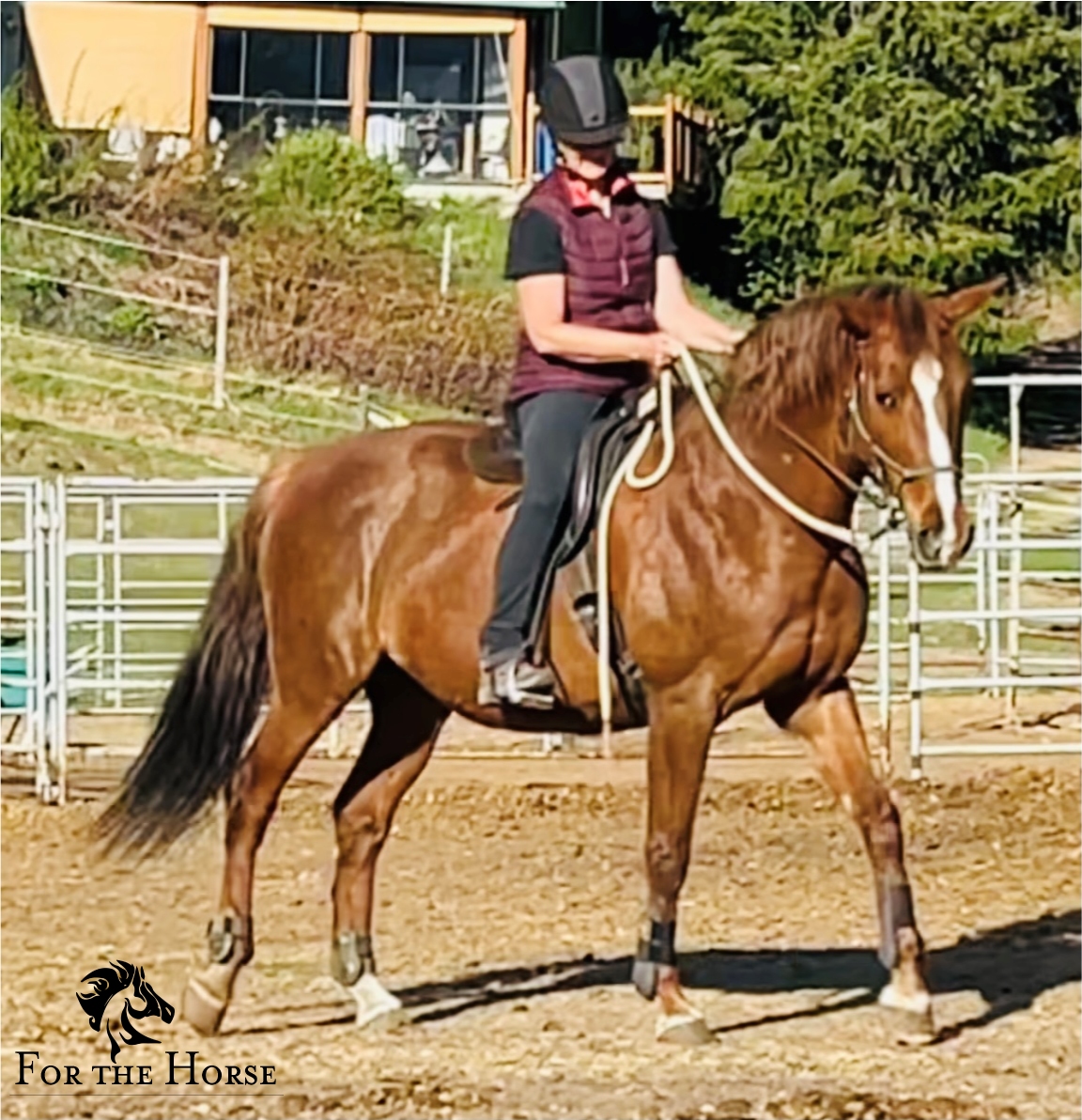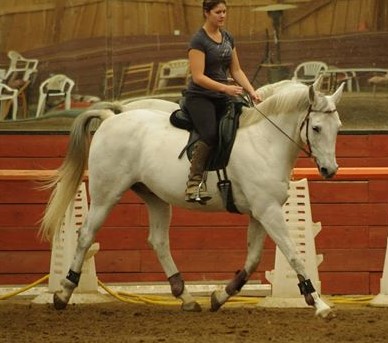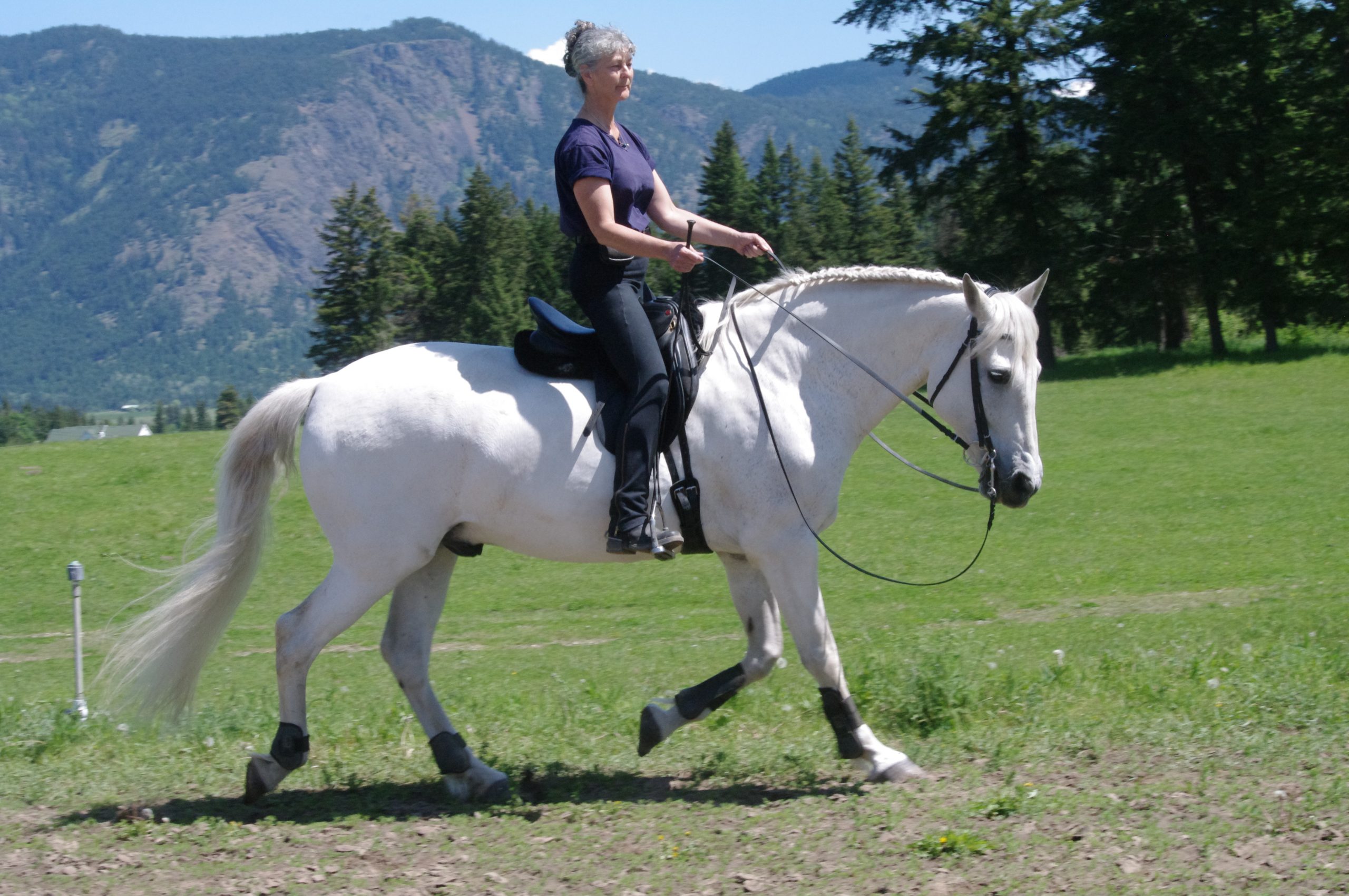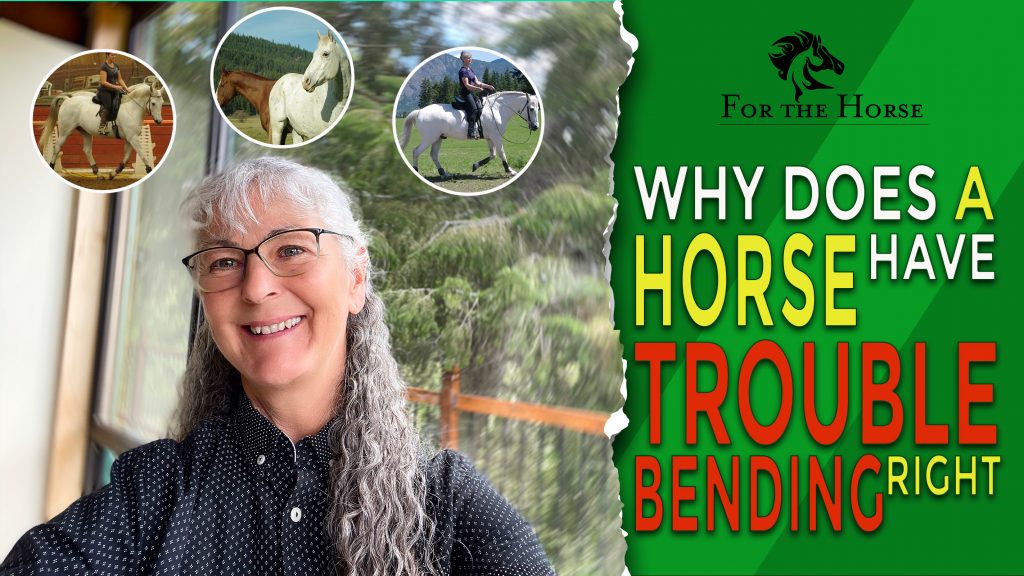Why does a horse have trouble bending right? This is such a common question.
And here's how you may know that you have a bending problem. Let me know if you have experienced any of these things...
* you're getting progress, but it's not as much progress as you wanting.
* you're getting partial results, but it's never a smooth and flowing turn, it's kind of sticky
* your horse seems willing to cooperate somewhat, but not totally willing
* your horse doesn't really want to be with you
* your horse gets distracted easily may be spooky
It just goes on and on and on.
So if this is you, if you can answer yes to any of those questions, then you're in the right place. Because we're going to talk about why a horse has trouble bending right.
In our Harmony For the Horse Program we help you to work with your horse as a guide to get clear on what your horse needs from you and how to create effective, good movement for life...even to the right!
CLICK HERE to discover more about how we can help you to reach freedom, achievement, oneness and joy that you most seek with your horse.
I'm going to break down how you can deal with all of these problems by fixing the root cause.
And the root cause is clarity. It's your clarity.
...you're riding and the clarity that you have in your riding. Because the clearer you are, the easier it is for your horse to mirror that clearity back to you. The easier it is for everybody to understand what's going on. And the easier it is for you to get the results that you're looking for.
And I can tell you this, because I've helped so many riders and their horses in so many different disciplines, it doesn't matter if you're doing just dressage, if you're jumping, if you're doing a venting, endurance, whatever it is, all these disciplines, I've helped them to fix their problems and the problems with their horses. And it usually comes down to clarity.
Clarity isn't just what you're doing with the aids. It's more than that.
It's the understanding that you have, and how you can create lightness and balance with your horse.
There are very few people who do this and who train this and who teach this. And it's basically a remedy for all kinds of difficulties that riders have with their horses.
Horses are horses, and they need to be balanced ... riders are riders, and they need to be balanced, whether you're in dressage, in western riding, whatever.
We all need to have a balance within our bodies and within our horses' bodies. So the number one thing that I'm going to talk about is...
#1. You are either promoting healthy movement or dysfunctional movement
It's one or the other, either healthy movement or dysfunctional movement.
So when you work with your horse, are you doing it in a way that is creating healthy movement patterns or are they patterns of dysfunction?
Do you work your horse in a way that is creating healthy movement patterns or a the pattern of dysfunction?
This is important that you know this.
A lot of horse owners and riders often tell me and they come to me with their problems, one of which is bending right, it's pretty common, and what their goals are and what they are looking to achieve. Maybe they want to help their horse, because it's leaning on the bit or falling onto one shoulder all the time. They can feel that. Or They want more lightness, or maybe they want to learn how to straighten their horse. And they want to know what exercise it is to fix that.
Well, it's not all about exercises.
Because when there's collapsing happening in the body, or when there's not balance or when there's not self carriage, then that means that what you're doing with your horse further is going to be precipitating a dysfunctional way of moving.

Other things like building top line, better lateral movement, or rehabbing from an injury - it's all the same. It's all relating to this one thing, either healthy movement or dysfunctionally moving.
But actually what the riders don't understand is how the horse got there in the first place. They tend to focus on the exercises and picking this exercise and doing that, and not actually having the knowledge on how their horse moves, or how the horse got there in the first place.
So, how does your horse get there in the first place?
Or how is your horse actually moving?
So let me give you an example...
One of our students in our program had a lot of pain when she was riding. And she was always feeling that things just weren't right in the saddle. So she did all kinds of exercises, like putting her hand up as she's riding and doing this and doing that. And her horse and her we're still having troubles.
She would fix one thing, or she thought she fixed one thing. And then something else would show up.
I remember clearly her telling me the story about how she felt that she had fixed the horse's ability to look right. But then she felt that there was fishtail happening, you know that the hind end was like, kind of not there.
And so what we did, and this is what we do in our program is, we taught her how to make the shift that she needed to make, to understand this.
We taught her how to experience movement coming through her.
And this is what's different, this is what is unique about our program, as well as some other things. It's not just a theory, it's just not tasks to do, it's just not the motivation, but rather it teaches you the whole, on how movement comes through your body?



How do we experience that? How to feel that? What does it feel like when movement is coming through your body and not being blocked somewhere? That's crucial.
We helped her to see it. And so she was saying things like this, like, "Oh, I never thought of it that way. I was doing it this way". And "I knew it didn't make sense to me. But I didn't know what to do."
Now she could see it.
And so my job was, first of all, to help her to release the pattern in her body, as a rider, what was happening where she was collapsing, release that in her body, and actually find out what was happening that she couldn't feel at the time. But we could see very clearly.
Release the energy around that and release that pattern, and give her a more effective way to work, a more effective way to ride, a more effective way to approach your horse.
She experienced that the movement was coming through and what a difference that made for her horse. And once she could connect in this way with her horse, it was strikingly obvious, when before she couldn't feel it.
Now she could actually feel what was happening within her horse's body.
We can't help our horses until we know exactly what's going on within our bodies first, and then understanding how our horse's bodies move.



She now could bend her horse and her horse was now able to bend.
This is how we have a healthy, balanced and light self-caring body. Not just the exercises and picking exercises that maybe aren't relevant.
This is how we have the balance. This is how we search for it. And sometimes when we just choose exercises, doing them repetitively and hoping that it's going to work, it's just a false hope.
#2. Form to Function
And there is so much information about this on the internet, you can Google it, you can find information about the concept of form to function, form and function, and function to form, vice versa.
Understanding the biomechanics of that even if you're a recreational rider, even if you're just wanting to do trail riding, there's a lot that's involved with trail riding.
The minute that we do something with our horses, even on the lunge, we're noticing the horse is not bending to the right.
We need to take the responsibility upon ourselves to get the knowledge and to understand what's going on within our horse's body.
The information that is missing for riders is how to teach the rider how to feel it, or how to experience it.
I first learned about Form to Function, back when I was a professional dancer, and this is where I first experienced it and was from one of my teachers, her name was Patricia Beatty. And she wrote the book called Form to Function.
It was just a little small book back then many, many years ago. I implemented the theory to what I was actually doing with my body as a dancer.
And now I've applied 40 odd years of knowledge and experience to help riders to do the same...
This is understanding. When you understand that, then your legs are free to move, the limbs are free to move, the head, and neck is free to move, and you will have a nice bend to the right.
And when you have a good bend right and you have a horse who's moving correctly and properly, then other problems like spookiness that I talked about at the beginning or willingness, they just disappear, because the horse wants to be with you because you know how to help the horse.
You will know how to guide the horse through dysfunctions to functional movement.



This is really essential imperative information that will help you.
First must understand what happens in the horse's body, before we put the horse into any kind of exercise, we need to find out where there is something that's a disorderly way of moving or a dysfunctional way of moving.
And it's not rocket science, it's not difficult, but we do need to pay attention. And then when we know that we could not work our horses in such a way that the dysfunction or any restriction or any blockages are corrected.
That's when we can really ride our horses, because we know the time that we're investing with our horse is going to be for the benefit of both us and our horse, not degrading the horse.
So in other words, if you want to train your horse correctly, you need to understand what is happening in the body, your body, your horse's body, what movement is correct for you what movement is correct for your horse. And what is dysfunctional before you even ask the horse to move in any way.
If this is something you want to get support with, you can apply to work with us in our program where you can get help to reach your equine goals. We will be happy to chat with you about what's happening with your struggles with your horse, and how you can finally resolve them so that you can have rides that are totally fulfilling and predictable, free and flowing.
CLICK HERE to schedule a call with us!
MORE RESOURCES TO HELP YOU BUILD YOUR DREAM HORSE

